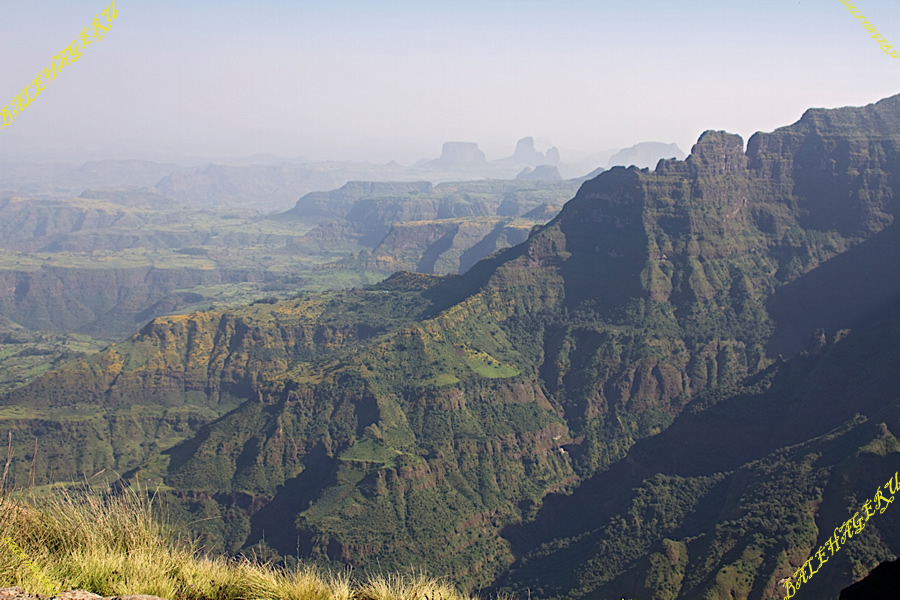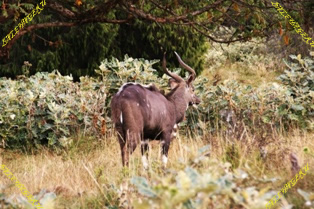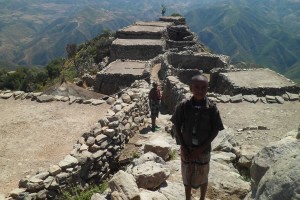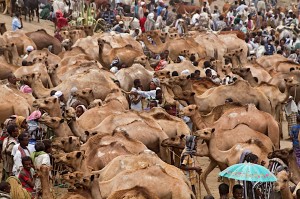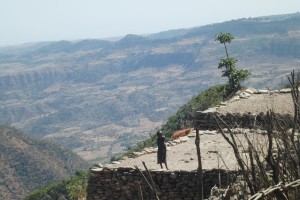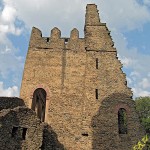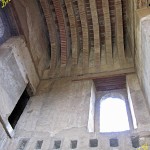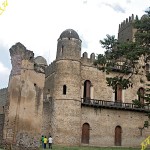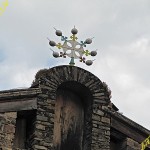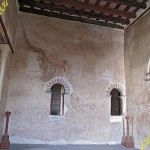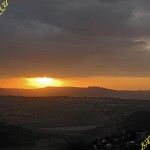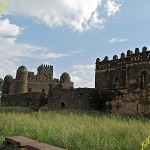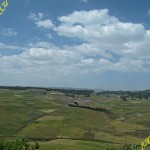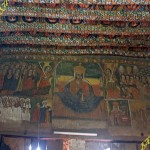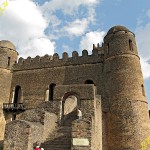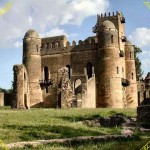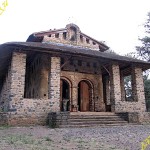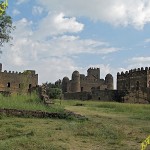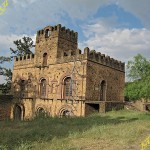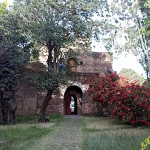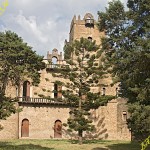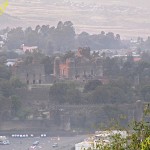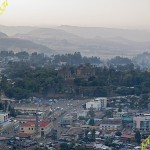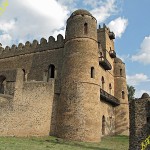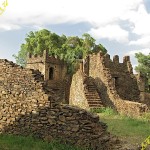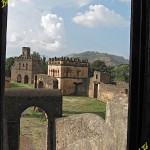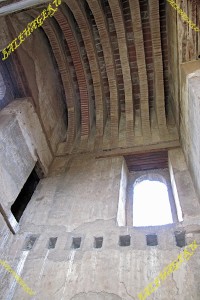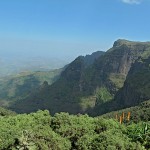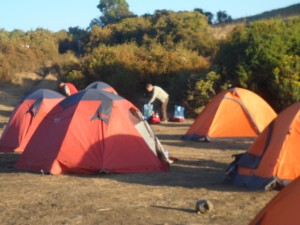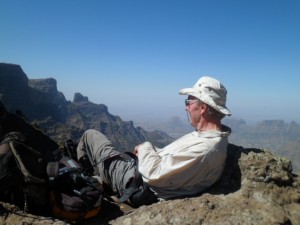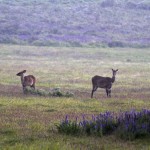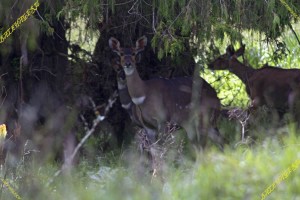Below are samples , your actual itineraries can be worked out to fit your programme.
You can start your programme at any of the sites. Your decision will depend on where you are coming from, where you are going to after the community trekking, how you travel to the sites (public transport, hired vehicle or your own vehicle) and what time of day you can get to Meket. The below itinerary is taken from the Mequat Mariam site heading east and north towards Lalibela, but it can be reversed and sections from it can be walked.
Day 1: Filakit, is the administrative centre for Meket (woreda) district and it is here that you would travel to start your trek to Mequat Mariam Community site. You may have your guide with you if travelling from Lalibela, otherwise you will meet him here at the Save the Children office. You will probably want a quick lunch in one of the local ‘hotels’ – enjara and wot.
If you have a hired vehicle you should drive from Filakit to the church of Werkhaye Mariam, an old church dedicated to St Mary, tucked in a large Juniper wood, lying a few kilometers out of town. (You actually take a rough track from Geragera, the twin town lying below Filakit).
At Werkhaye villagers from Mequat Mariam will await you with a donkey to carry your bags. From here you trek across the plateau following well worn paths (often bolder strewn) through the agricultural landscape of the highlands. Little boys and girls watch their sheep,cattle, horses and donkeys. Older girls can be seen fetching water from springs along the way, and the men ploughing fields with oxen, engaging in harvesting activities or other agricultural work depending on the time of year and day of the month (on saints days it is forbidden to engage in many activities).
At the newly renovated church of Hanna Mequat, with acacia trees dotted around the church compound, you will get a glimpse of the escarpment edge that will be with you for much of the trip. Beyond the church you will join it and follow it round to the tukuls (thatched cottages) at Mequat Mariam. The total walk time is about 3 hours plus stops.
The staff – all members of the local villages – will meet you and serve snacks – perhaps a ‘Meket Pizza’ with tea or coffee, or perhaps you will be ready for a beer. As you enjoy this you can watch the birds soaring on the thermals – ravens, the odd vulture, perhaps a lammergeyer, and innumerable others. There is a shower, with water warmed by the sun – though do go a bit easy on the water. Don’t miss the sunset on the ‘rock bar’ with a sundowner drink.
The community will serve a good meal – simple western food – after dark in the dining tukul, and if you would like will prepare a traditional Ethiopian style coffee ceremony.
The community have built especially designed tukuls bedrooms – traditional style with thatched roof, and stone walls. However the beds are comfortable mattresses, with clean bed linen and blankets.
Day 2: A breakfast of either eggs or pancakes, with tea or coffee will get you ready for a good days walk. The walk from Mequat Mariam to Wajela winds along the escarpment for much of the way with staggering views of the river systems and farm land below. There is a good chance to see Gelada Baboon along these escarpments, and if you are lucky Rock Hyrax, even a Klipspringer.
After a few hours the Mequat community hand over to the Wajela community – a fresh donkey for the luggage. Here you can eat the simple picnic lunch, maybe with a soft drink carried by one of the community. Some of the route cuts across the plateau top and there are some short cuts if you want to reduce the walking, but if you feel fit much of the time you can follow the escarpment edge.
Towards the middle of the afternoon you will reach the church of Kura Anbessa Giyorgis, perched on the rock edge, with Olive (Olia Africanus) and other indigenous trees around. Kura means crow/raven and Anbessa Lion! If you meet one of the priests ask for an explanation of the name. It is possible to take another route and come across the carpet weavers, but there is not time to do this and the church.
After Kura Anbessa you cross the road and head north across the plateau to the Wajela site. Again a warm welcome and snacks will await you at Wajela with its cozy tukuls over looking a wooded escarpment. If you are early there is a 2 hour round trip to a church and cave structure below. You can also rinse off in the shower. Dinner as in Mequat is served in the dining tukul, sometime after sunset.
Day 3: Another good breakfast should prepare you another day’s walk, this time on the northern side of the escarpment. This time the midway point is the attractive church yard of Galla Dejen Giyorgis (another story behind the name!) In the afternoon you could drop down to a level below the escarpment to pass by the old church of Akat Abo and it lovely woodland. The land around is irrigated with local streams and there are crops year round. A little below Akat Abo, is a small rock church called Akat Markos. If your guide can find the priest this is worth the detour – if your legs are up to the climb down and up. Beyond is another rock church as yet unseen by the TESFA team – called Akat Medhane Alem! After climbing back up to the plateau you quickly come to Aterow Aragawi, the parish church of the Aterow community. Facing east looking over a gorge are four impressive tukuls – three bedrooms and a dining room, along with the toilet. Again snacks and drinks await, followed by dinner.
Aterow is the best Gelada Baboon spotting site, with quite sizable troops living on the cliffs that head down to the gorge.
Day 4: Aterow is close to the cross roads settlement of Gashena where the Lalibela road meets the east/west road connecting Bahir Dar and Gondar to Dessie, Weldiya and Mekele. However instead of heading for Gashena, there is a path that drops down to a waterfall above the gorge and follows quiet farm land dotted with numerous indigenous trees, until you meet the Lalibela road.
Here the route crosses the road down and then you climb up to the village and church of Timtimat Abo where you will meet the Yadukulay team.
It is a steeper descent to the church of Yadukalay Giyorgis church in a woodland with many Olive trees. A Yadukulay is a small forest dwelling animal that used to be abundant in the area. We are still trying to figure out what kind of animal it is. Yadukalay is the newest site, with its two story tukul, and panoramic views. Again much of the land benefits from micro irrigation and there are impressive escarpment on two sides and grand vistas on a third.
Once again you will be greeted with traditional Ethiopian hospitality, and provided simple but good food and accommodation. If you want to do some extra walking after you have had a cup of tea, you can explore down the valley further – at the head of the valley there is a waterfall – although we have only managed to see it from above so far!
Day 5: Yadukulay is a short walk (1-2 hours) from the village of Taja, from where you can either wait for a bus to Lalibela or if prearranged, meet a hired vehicle to take you the 50km back to Lalibela. Across the river just below Yadukulay is a lovely rock church called Yedoga Abo, carved into the cliff facing Yadukulay. It is perhaps an extra hour’s walk, but is a worthwhile detour.
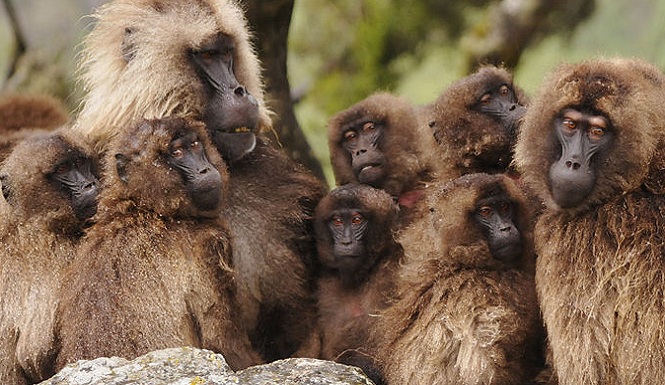 mien mountain
mien mountain
